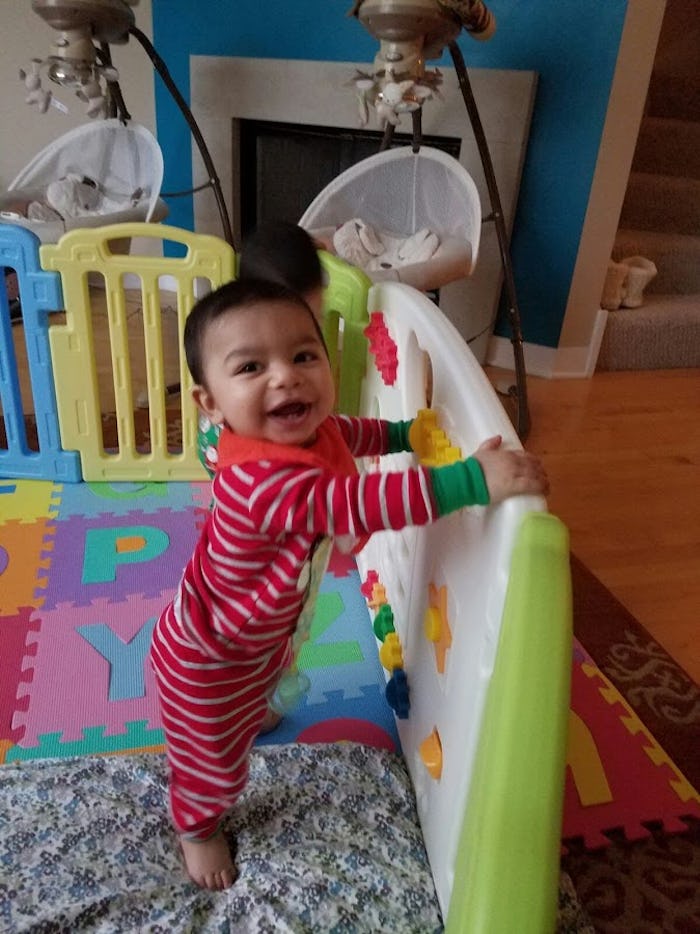Life

Cruising Is A Major Milestone, So Here's When Your Baby Will Start Trying It Out
From the day your baby comes home with your from the hospital, you begin noting every first they reach. With excitement, you commemorate events like their first smile or first coo, and you just can’t wait to see their next first. If your baby is beginning to stand, you’re understandably waiting for them to start moving about the house. This is a much anticipated milestone, but exactly when do babies start cruising? It’s a big transition from infant to toddler, so you’ll need to start baby-proofing as soon as you can because your baby may start cruising sooner than you think.
In an interview with Romper, Pennsylvania pediatrician Dr. Jarret Patton says that babies typically begin their cruising phase when they are around 8 to 9 months of age, up to around the 11-month mark. Cruising marks their transition from crawling to walking, so you can expect that next. “Cruising is the last stage before babies learn how to walk,” adds Patton, “which typically starts from 10 to 13 months of age.”
So how can you tell if your baby has begun cruising? According to the American Academy of Pediatrics (APA) Healthy Children website, cruising usually begins after your baby is already crawling or scooting around the house. Your baby will first try to stand up while holding something for support, the website noted, and once they are comfortable enough doing that, your baby will practice sitting back down. The APA explained that when a baby finally feels secure enough with their standing and sitting skills, they will begin to take a few steps here and there, all while holding on to surfaces like tables, chairs, and beds for support.
While this newfound freedom, mobility, and sense of discovery is inspiring for your baby, it can become stress inducing for parents. It was easy just keeping your baby in a car seat, stroller, or in your arms before they finally realized their potential to move around. But once a baby knows how to be on the go, you will have to learn how to chase them around. For their own safety, you’ll need to be extra cautious of where they are going, what they are grabbing, and what things they could potentially put in their mouths.
Before your baby starts cruising, you should know what steps to take to make their interactions in the house safe. Babies will grab any surface they can reach, without much care for the things around them, so if you have sharp corners on tables, exposed cables or wires, or easily accessible stairs, you should begin figuring out what precautions you need to take.
According to Baby Center, you can start by capping your electrical outlets, tie up any dangling cords or cables, and secure any tablecloths or items that a baby can pull down. The website also suggested protecting the baby from sharp edges with cushioned protectors designed for baby-proofing, along with removing any unstable furniture or lamps from the room. If you have stairs in your home, you may consider installing a baby-safe gate in front of them so your baby doesn’t climb or tumble down the stairs when you’re not looking. Because babies like to put everything in their mouth, if you have anything in the house that looks like a potential choking hazard, try to move it so it’s out of your baby’s reach.
So if your baby is crawling or scooting, they will be cruising soon enough. Just make sure to make your home safe for your little explorer, and keep a close watch on what they’re getting into. Because once your baby is mobile, it’s a whole new ballgame.
Check out Romper's new video series, Bearing The Motherload, where disagreeing parents from different sides of an issue sit down with a mediator and talk about how to support (and not judge) each other’s parenting perspectives. New episodes air Mondays on Facebook.